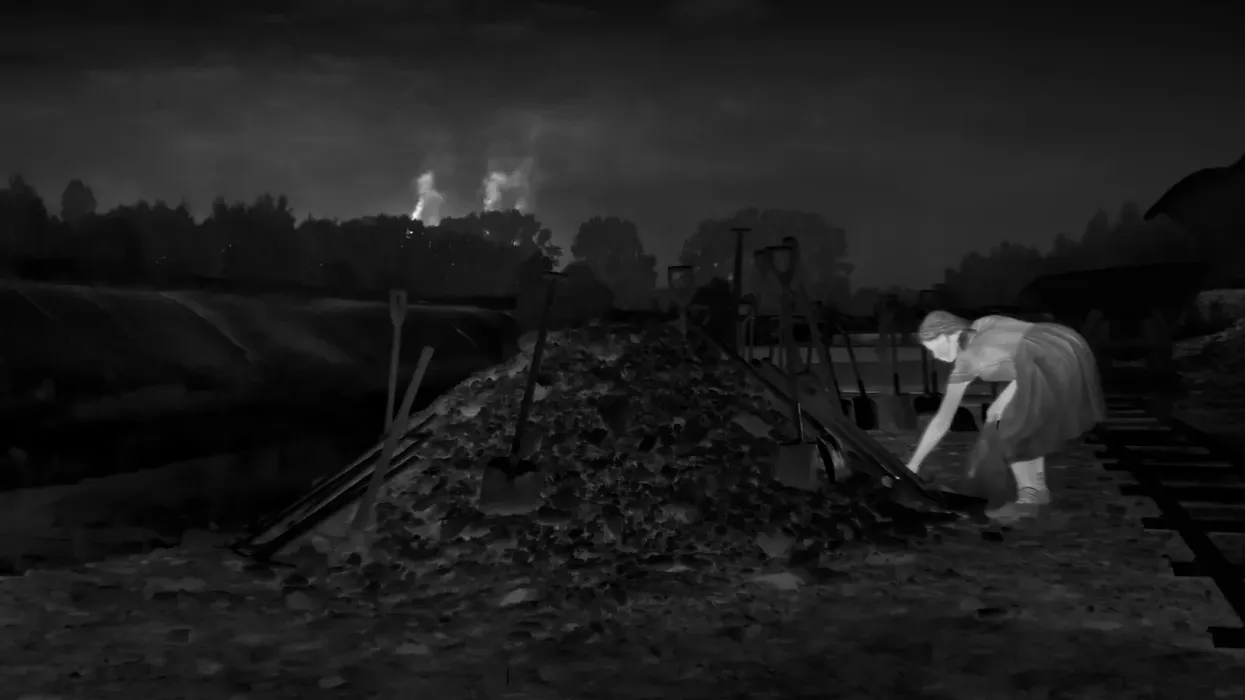What's With Those Night Vision Scenes in 'The Zone of Interest'?
These bold cutaways serve an incredibly important purpose in the five-time Academy Award-nominated story.

The Zone of Interest
It's hard to put into words how powerful The Zone of Interest is.
Written and directed by Jonathan Glazer, (now nominated for five Academy Awards, including both Best Picture and Best Foreign Picture) the film follows Auschwitz commandant Rudolf Höss and his spouse, portraying their attempts to forge an ideal existence adjacent to the concentration camp.
While that haunting storyline takes place, we have cuts in the story to a portion shot entirely in night vision. This portion follows a Polish girl who hides food for the people stuck inside Auschwitz.
But why shoot in night vision, and who was this girl in the story?
What's With Those Night Vision Scenes in 'The Zone of Interest'?
The Zone of Interest is a movie I will probably never watch again. I found it to be an extremely challenging endeavor. And the pure disinterest from the family at the center for the atrocities they're committing is absolute evil.
But what I appreciated inside that movie is that Jonathan Glazer was still bold enough to attempt different stylistic mediums in order to get his themes across to us.
The one I thought was boldest was the recurring night vision cutaways to a girl we never meet. We see her leaving apples for prisoners and skulking through the night in order to get away with her resistance.
When speaking to The Guardian, Glazer let us into his window on why those scenes are in the film. The first interesting tidbit is that they're based on a real person's actions.
“She lived in the house we shot in,” Glazer said. He continued, “It was her bike we used, and the dress the actor wears was her dress. Sadly, she died a few weeks after we spoke.”
This is a great historical account, but why add them to a movie that is largely about how apathetic we become to violence?
Glazer was purposeful in his answer, saying, “That small act of resistance, the simple, almost holy act of leaving food, is crucial because it is the one point of light. I really thought I couldn’t make the film at that point. I kept ringing my producer, Jim, and saying: ‘I’m getting out. I can’t do this. It’s just too dark.’ It felt impossible to just show the utter darkness, so I was looking for the light somewhere and I found it in her. She is the force for good."
I think that answer is critical when it comes to making a film like this one. It would be maybe too bleak not to show some resistance to the evil we endure while watching.
Even if the overall moral is the banality of that evil, we need those moments, in the dark of night, to give us some hope that the human spirit can resist.
Thematically, I think we're in night vision because the scenes during the day contain so much horror; these need to be the direct opposite.
Let me know what you think in the comments.











